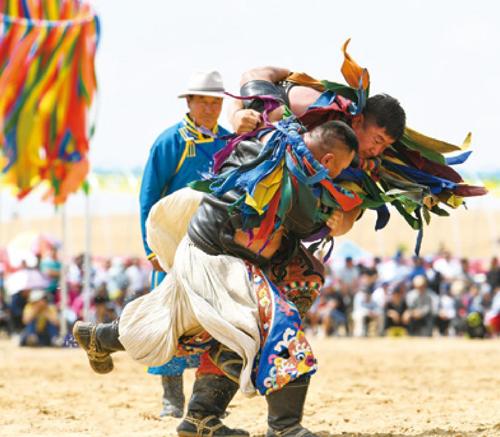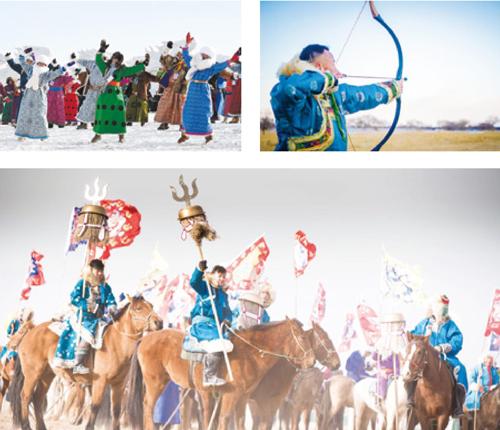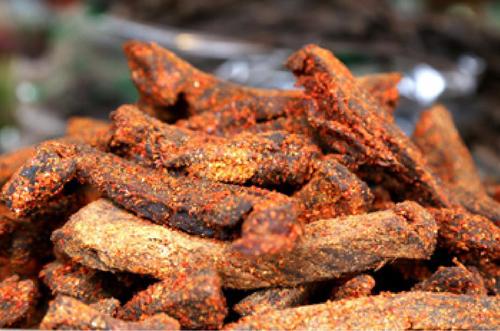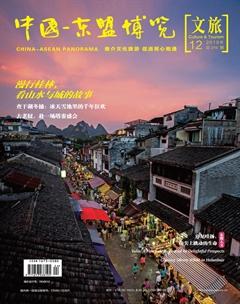Chasing Silvery White in Hulunbuir
Mo Tingting



Hulunbuir is a place where Genghis Khan (1162-1227), the founder of the Mongol Empire, was born. With white clouds, warblers, flocks, herds, lush plants, crisscrossed rivers and lakes dotted around, Hulunbuir Grassland likes a huge green picture scroll, giving you boundless views. Since its unspoiled nature, products like meat, milk and other animal products are favored by visitors. Besides, you can indulge in the unique lifestyle of nomads during the Ice and Snow Nadam Fair, such as riding on camels and horses, watching wrestling, and enjoying the lamb feast as well as a bonfire in the evening.
A tour of snow and ice
Named after the Hulun Lake and Buir Lake, Hulunbuir Grassland boasts the most well-preserved grassland in China, with various kinds of pasture such as stipa, alfalfa and weat grass. Home to several amazing and different ecosystems, Hulunbuir is fed by hundreds of rivers, large and small, which have made this area popular with Mongolian nomads and herders.
“Hulun” in Mongolian means “otter” while “Buir” in Mongolian means “male otter”, because these two lakes in the past are rich in the otter. There was a beautiful legend about how the name “Hulunbuir” came to be. Once upon a time, a brave Mongolian tribe had a pair of lover. The girl named Hulun was good at singing and dancing and was endowed with both beauty and talent, while the boy called Buir was extremely strong and was talented in riding and shooting. They fought against the demon for the love and safety of the grassland, then the girl turned into a lake and drowned the demon, while the boy jumped into the lake for the girl, hence its name.
Weather in late May and mid-September is generally comfortable. However, you must take long-sleeved clothing with you as there is a big temperature difference between the daytime and night-time. During this period, the uninterrupted green of Hulunbuir Grassland stretches in all directions, making the most remarkable feature of this region. Under the blue sky and white clouds, those sceneries such as vast grasslands, herds of cattle and sheep, running horses with herdsmen waving the saddle are right here under your nose.
Winter is long while summer is short here. Nowadays, Hulunbuir Grassland is also fast earning a reputation as a tourist hot spot in the cold months. From November to February, it is the best time to view the spectacular snowscape. The lake gets frozen since the beginning of November and wont thaw until early May of the next year. The entire area, with its expansive grasslands, rolling mountains, rivers and forests, is covered with ice and snow for seven months per year. Arriving at the Hulunbuir Grassland in winter, the first thing that you feel will be cold. First-time visitors are well advised to wrap up every part of the body except their eyes.
Tips
Add: Located in the northeastern part of Inner Mongolia Autonomous Region, Hulunbuir City borders Heilongjiang Province to the east and shares boundaries with Outer Mongolia and Russia in the southwest and northwest.
Countdown to Ice and Snow Nadam Fair
Is there a slack season for Hulunbuir after October? In fact, this is a misunderstanding. No matter what season it is, you can find something interesting in Hulunbuir. Every winter, Hulunbuir Grassland becomes a snow-covered fairyland, and the culture of Ice and Snow Nadam Fair makes the grassland an attractive destination, attracting a bunch of tourists to have a taste of the distinctive nomadic lifestyle on the prairie.
The term “Nadam” in Mongolian means “entertainment”. Nadam Fair, a mass traditional Mongolian festival, will bring loads of fun for both residents and tourists with various activities, such as a grand opening ceremony, marathon and skiing on a snowfield. It is staged twice a year — once in summer and once in winter.
Usually, ethnic elements will be woven into the grand event through a variety of activities, performances and costumes. You can see that a girl dresses up Mongolian-style costumes to participate in the grand gala; a herdsman maneuvers a group of horses; and a Mongolian herdsman leans his body down to swiftly pick up a blue hada (a piece of silk used as a greeting gift among the Zang and Mongol people) from the grassland while riding a white horse, which is a feat to demonstrate horsemanship skills. These scenes would remind you of Robert Flaherty's documentary Nanook of the North.
Hulunbuir usually celebrates the Ice and Snow Nadam Fair with performances of ethnic traditions. The horse riding will provide festival-goers with local ethnic groups unique horse skills and racing speed. Wrestling, one of the grandest athletic activities for Mongolian people, had become an event of the Nadam Fair dating back to 700 years ago. The shooting was an important hunting tool and war weapon for Mongolian people in ancient times. Many years ago, the Mongolians had been famous for being good at shooting. However, it has gradually developed into what it is nowadays as a PE sport. In addition, bonfire parties, ethnic vocal arts and dance performances will add more ethnic flavor to the traditional exuberant celebration of Mongolian culture and sports.
During this event, travelers bundle up so that only their eyes are exposed to the frigid winds — but their eyelashes quickly freeze. Not even hot water stays liquid at these temperatures. Some visitors splash hot water into the air and watch it fall as snow and tiny icicles. Many of them are from the south, where snow is rare. They brave the chilly weather to enjoy the carnival with the locals.
Every winter, Hulunbuir Grassland becomes a snow-covered fairyland, and the culture of Ice and Snow Nadam Fair makes the grassland an attractive destination.
A sense of ease and simplicity
Indeed, the warmth of the locals is another attraction that makes Hulunbuir a hot destination in the cold season. The unsophisticated herdsmen must first toast the guests with wine and songs before they visit their Mongolian yurts. Local girls, dress in traditional costume, drape blue hada over their open palms as they sing their special songs of welcome. Offering hada is a particularly disarming ritual to express good wishes. Something anyone thinking of going on a trip to Mongolia should know is that: Men sit on the left-hand side and women on the right-hand side of a yurt.
Here you can enjoy a feast of ethnic food including milk tea, cream, cheese and fried rice. Laughing and singing with the locals, making numerous toasts, and learning about their costume, etiquette and customs will bring you a sense of ease and simplicity.
The roasted whole lamb is a kind of precious dish for entertaining distinguished guests, sacrificing, and for the opening ceremony of important festivals. It is famous for color, fragrance, taste and shape. The roasted lamb legs are evolved from the roasted whole lamb. Compared to roasting the whole lamb, roasting lamb legs is quicker and more palatable. So gradually roasting lamb legs takes the place of roasting the whole lamb. After longstanding development, people add various ingredients and sauces during roasting lamb legs to make them fragrant and fresh. In addition, Hulun Lake abounds with such aquaculture as white fish and white shrimp, which are meaty and nutritious. The fresh fishes and lake shrimps of Hulun Lake can make more than 120 kinds of dishes, known as the “Whole Fish Feast”.
Tips
Other activities: Dressing up in Mongolian attire; taking a refreshing gallop on a Mongolian steed across the endless grassland; taking a leisurely ride on a bactrian camel; taking a ride on a special Mongolian horse-drawn cart; paddling a boat on the Hulun Lake in search of fish.

